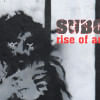The walls of Dhaka: Canvases of protest or eyesores?

The walls of Dhaka have long been a canvas for the city's residents to express their thoughts, frustrations, and aspirations. From student protests to political sloganeering, the buildings and infrastructure of the capital have become a public forum for the people's voice. However, the current state of these walls, covered in a motley of graffiti and one-liners, has sparked a heated debate.
On one side of the argument are those who believe that the walls should be left untouched, even if they contain explicit language or subpar artistry. They argue that this graffiti is a reflection of the "collective anger" that the common people have held towards the former totalitarian government. As a literature student from North South University put it, "Slangs are part of our language. And it's difficult to express frustration and anger without using slangs. So, we should embrace them and leave them on the walls."
The opposing view, however, holds that "uncivilised gestures" have no place in a protest movement. A Dhaka University student opined, "Why do we need to use inappropriate language (slang), when we can use powerful words, such as 'dictator must fall' and other slogans that have been chanted by hundreds of people throughout the protests?" This sentiment is echoed by those who believe that the walls should be repainted, not only to remove the unsightly tagging containing lewd languages, but also to preserve the more politically potent expressions.
Recently, the one-liners done by spray paints on the wall of the DB (Detective Branch) office have been removed and the wall has been repainted by cartoonist Morshed Mishu. Previously, the walls displayed a crude one-liner that reads, "Harun er bhaat er hotel bondho", with another line body-shaming him in inappropriate language. Now, the freshly painted graffiti carries a far more powerful statement against corruption and for better public service. The walls now display the bold declaration, "Ghush bondho" (Bribery must be stopped), along with the call, "Police must serve the public."
This direct and uncompromising stance against corruption is a welcome sight, particularly in a government office that should be a bastion of integrity and accountability.
The case of the graffiti depicting the iconic Abdul Hamid Khan Bhashani, painted by artist Jahid Jamil, being whitewashed is a prime example of this debate. The graffiti was painted by him while nationwide brutal crackdown was going on. The removal of such quality work, which bears significance of the anti-discrimination student movement, has understandably angered many. There is also an argument that the walls must be treated equally, regardless of the artistic merit of the graffiti. This raises the question of whether the walls should be seen as a canvas for artistic expression or a medium for political messaging, and how these competing priorities can be balanced.
From this standpoint, the walls should serve as a platform for well-crafted, thoughtful messages that convey the movement's core values and demands in a clear, dignified manner. However, preserving the graffitis that were done by the protesters throughout the movement must also be taken with equal importance. However, the use of slang, in this view, undermines the legitimacy and seriousness of the protest, and the walls should be treated as a public space that reflects the aspirations of civil society, rather than the raw outbursts of the marginalised, at least in the long run.
However, a nuanced analysis suggests that there is value in preserving the graffiti that holds the sentiment of the student protest and was done before August 5, the day former prime minister Sheikh Hasina resigned and fled the country. As a political science student from DU argued, "the inappropriate ones, containing slangs and spelling mistakes" represent the participation of the marginalised sections of society in the movement, which evolved into a mass upsurge. These powerful words and expressions, even if they include some slang, reflect the collective anger of the masses.
Ultimately, the debate over the walls of Dhaka is a microcosm of the larger struggle between order and expression, between aesthetics and authenticity. While the authorities may be tempted to paint over the entire canvas to restore a sense of uniformity, it is important to recognise the social and political significance of these walls as a public forum.
Perhaps a middle ground can be found. In the current context, where an interim government has just been formed and Bangladesh is on the cusp of a critical political transition, the walls of Dhaka can serve as a vital medium to raise awareness and promote the values of a just, secular, and inclusive society. Amidst recent reports of arson, looting, and attacks on minority groups, the graffiti on these walls can be a powerful tool to convey messages of diversity, tolerance, and the formation of a truly democratic, secular Bangladesh.
Therefore, the politically potent graffiti must be preserved, while the more inappropriate and unsightly expressions can be selectively removed and replaced with graffiti relevant to the current political situation in our country. In doing so, the walls of Dhaka can continue to be a canvas for the people's voice, without descending into visual chaos.
Mahiya Tabassum is a journalist at The Daily Star.
Views expressed in this article are the author's own.
Follow The Daily Star Opinion on Facebook for the latest opinions, commentaries and analyses by experts and professionals. To contribute your article or letter to The Daily Star Opinion, see our guidelines for submission.

 For all latest news, follow The Daily Star's Google News channel.
For all latest news, follow The Daily Star's Google News channel. 










Comments